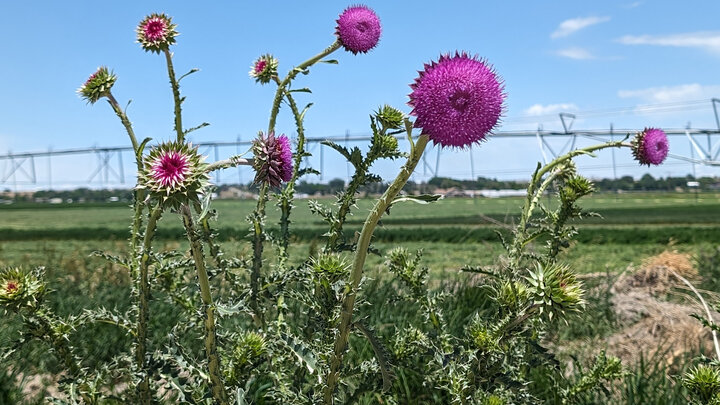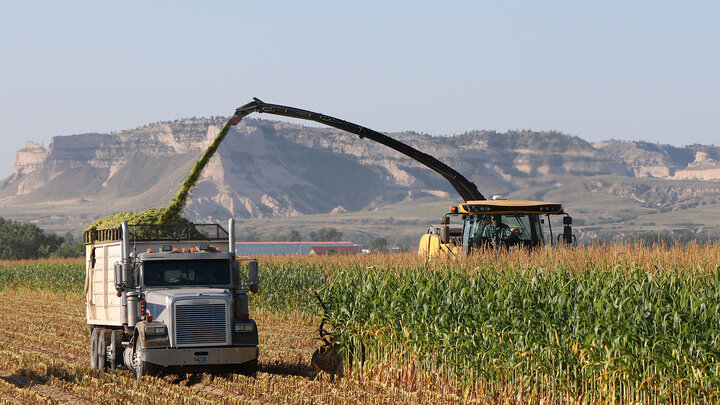Late April, May, and June are the months when we frequently see both native and non-native forbs begin to grow and start to flower in range and pasture. If you are seeing “pretty flowers” you may not recognize, now is the time to check them out. Those flowers or plants you don’t recognize may be a plant that is an invasive species. Early detection and rapid response are critical to helping to keep noxious weeds at bay. The cost and impact of their presence can be minimized by identifying and dealing with invasive species when the numbers are small. Also, scout now for noxious and invasive weeds you spotted last year. If you see new plants present, make a plan to control them.
Some common invasive species that are starting to grow or will be this time of year include leafy spurge, dalmatian toad flax, field bindweed, Canada thistle, scotch thistle, bull thistle, musk thistle, spotted and diffuse knapweed, and common mullein. Other species to be on the lookout for include absinth wormwood and sericea lespedeza. They are invasive species that don’t have big and robust brightly colored flowers. Preventing noxious weeds from going to seed is important for reducing seed spread. If the plant is already in the flowering stage, cutting off the seed heads prior to killing the plant will help to eliminate seed spread. Bagging and properly disposing of seed heads prevents viable seeds on plants from spreading.
Have questions about the plant you are seeing? Nebraska Extension has educators and specialists who can help you identify the plant. Bring in a plant or send a picture, and we will work with you to identify if that “pretty flower” belongs to a native plant that you can enjoy or if it is something you need to control.
The Nebraska Weed Control Association website https://neweed.org/ is an excellent resource on noxious weeds in Nebraska. To control the invasive species, check with the Nebraska Extension 2025 Guide to Weed Management, which is an excellent reference guide for herbicide options.




